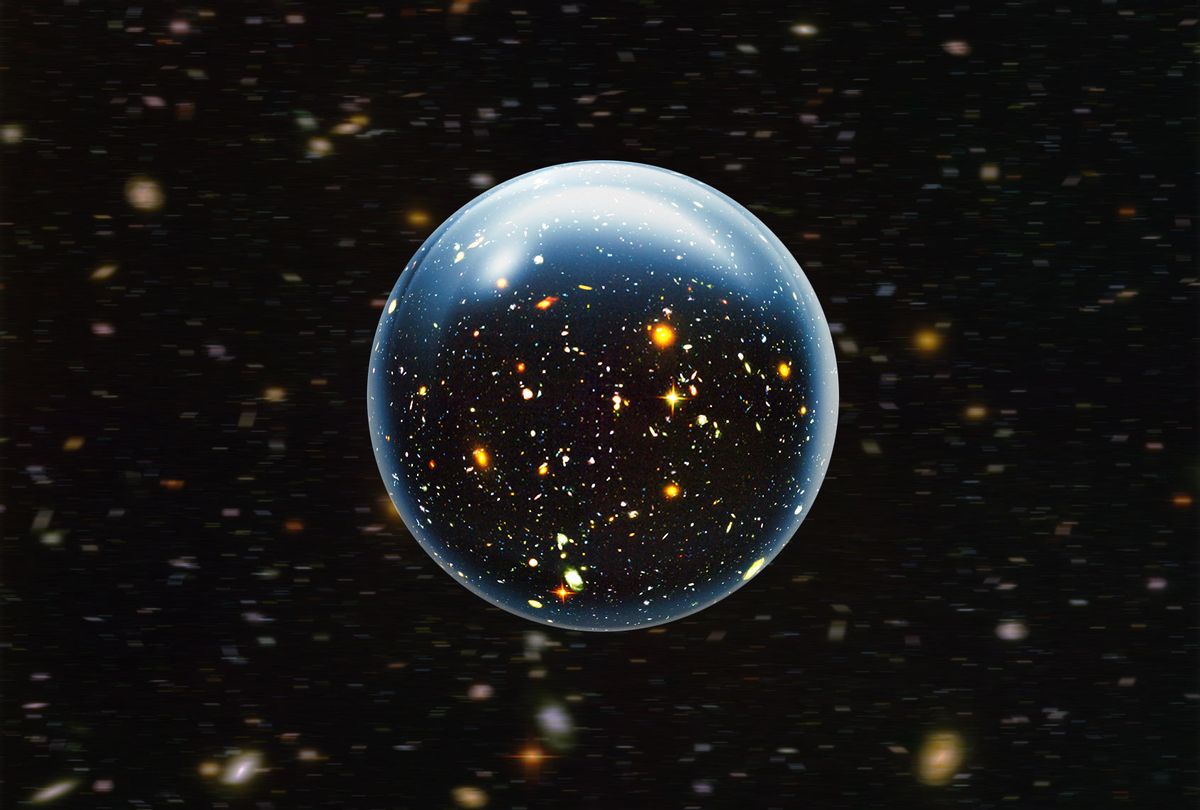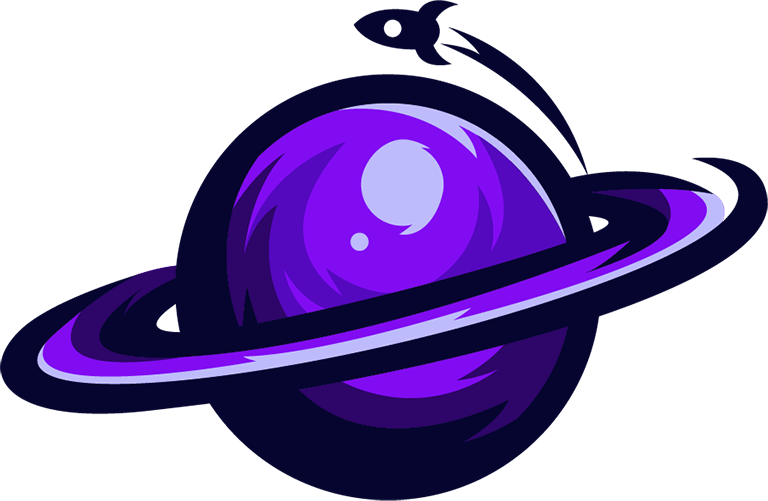New Study Suggests The Universe Is A Sphere
Uncover the fascinating history of the ‘shape of the universe’ theory and the recent findings challenging the belief in a flat universe.
Video of the day December 2nd 2019
Why Did We Think It Was Flat In The First Place?
I’m sure some of you are wondering just how this whole thing got started in terms of the “shape of the universe”. Mainly because it sounds like the idea of “Flat Earth”, which is something that we still deal with today despite the fact that it’s been proven the Earth is round for many, MANY years. But, for the universe, it’s a slightly different story.
Because to truly understand the point of this piece, we need to go back to the earliest days of astronomy, where many people believed that the Earth was the center of the universe, and everything revolved around it. Then, we slowly realized the truth, that we orbited around the sun, and that the sun was just one piece in a very big cosmic puzzle. So when we figured that out, we started to ask ourselves, “What is the shape of the universe?”
The problem was that we honestly couldn’t answer that right away because we didn’t have too much that could look into deep space. We only had theories and beliefs as to what the universe was truly shaped like, and it was through those that we believed that the universe was flat. Not because of the same reasons that people believed the Earth was flat, but because of how light travels in the universe as we know it right now.
Believe it or not, the “Universe Is Flat” theory not only makes sense, it explains a lot. Mainly because with the growth of the universe as it stands right now, we know it’s expanding in all directions, and that would only seem to make sense if the universe was flat. As it would be an all encompassing growth. So that’s why many believed in it, and that included a very popular scientist you all know…
Einstein’s “Relativity”
In the 1900’s, when Albert Einstein was helping shape the way we looked at the universe, he came up with a relativity theory that would give further focus as to how the universe may be shaped. But it wasn’t as simple as flat, it was more…curved…per se. Basically, he noted that it would likely be very hard for the universe to be completely flat like a canvas. Not impossible, but hard. Rather, he stated that the universe could bend, warp, and shift based on gravity and the masses of the various stars, planets, black holes and other entities that reside within deep space.
This was also the way that he helped explain how gravity was formed in the grander scale of the universe. Which is an interesting notion by itself. But his theory doesn’t fully give shape to the universe, rather, it gave the potential for one of three “variants” if you will to how the universe could be shaped.
The first theory is the one that most believe, the flat theory. That we’re on a canvas of sorts, and all the galaxies, stars, planets, entities and more are just dots on a map of sorts that is the place we live. However, another view of the universe is the “saddle” in regards to shape. It’s more curved, which is why certain pictures of the universe make us wonder if the flat theory is really true, because the perspective of those events just feel off.
Finally, Einstein theorized that potentially, the universe could be a rounded shape, not unlike how the Earth is right now. This is referred to as a “closed” universe”
Despite all the possibilities, most people are taught to believe that the universe is flat, that everything extends equally and that the universe works upon certain principles. But now…many are wondering if that’s actually true.
So What Changed?
As with all sciences, there are many believes that seem to be backed up by the sciences we have at the time. But as history as shown, just because we know something to be “true” now doesn’t mean that we won’t find something that can later disprove what is going on in the thoughts of others. That’s been shown with astronomy thousands of times over, and now, a team of scientists seem to have changed things once again by using the most basic of sciences to figure out the potential shape of the universe…they looked at the light.
Specifically, they looked at the Cosmic Microwave Background, also known as the CMB. What is CMB? Well, it’s:
“The remnant light from the big bang, and it is the most distant light we can see in the universe. Because of this, it is the light most affected by the shape of the universe. The scale of fluctuations in the CMB is determined by the amount of dark matter and dark energy in the universe, which we know, so we know how large the fluctuations should appear.”
These fluctuations of light have helped scientists in many ways over the years, and this new team looked at the fluctuations and noticed something very strange. Because the data from the Plank spacefraft indicated that the fluctuations of the CMB was much, MUCH more than it would’ve been. So, if the universe was flat, these fluctuations would not be possible. Or at the very least not to the extent that they are right now. Thus, this new study seems to show that the universe is more rounded than we earlier expected.
 source: Salon
source: Salon
Wait, How Does Light Help Show The Shape Of The Universe?
Ok, so we just threw you for a loop no doubt with the “proof” of how the universe is not flat, but you might not understand the science of what’s going on with the light analysis and why we should care about it. So allow us to help you with that front.
So think of it like this. You have a laser pointer, and you are aiming it at an object somewhere in the distance. If the distance between you is a perfectly shaped line, you’ll end up on a perfect “level”. But, if it’s curved, the light won’t end up where you think it will. Flat versus round as if where. For the universe as a whole, that’s the same thing. The light that gets emitted travels in a particular path, and the shape of the universe as a whole not only determines that path, but, affects how we perceive the universe.
After all, we know that the stars in the sky are stars because they emit light or are having light reflect off of something else, that’s how we see the moon in the sky since it doesn’t glow. The light of the universe is shining in all directions, but not all directions are equal depending on what the shape of the universe is:
“In a flat universe, parallel lines stay parallel, so light coming from two sides of a distant galaxy reaches us in a straight line. Their angles relative to each other stay the same, and so the galaxy appears as its true size.
If the universe is open, parallel lines diverge with distance. So the light from our distant galaxy becomes more parallel as it reaches us. This means the galaxy would appear smaller than it is. If the universe is closed, the opposite bending of light occurs, and the galaxy would appear larger than it is.”
The studies that have been done using the Plank Spacecraft and more seemed to indicate that the paths of light were perfectly parallel, and thus, the universe was flat, or very close to being flat. But with this new study, if the data is to be believed, that’s no longer the case. It would indicate that the universe is closed, a sphere, and that changes everything we know about the universe at large.
Why Does A Sphere Change Things?
On the surface (pun intended), this may not seem like a big deal. “Why should we care about how the universe is shaped when it doesn’t affect us here on Earth?” That’s a good question, and one I’ll happily answer. Everything we feel we know about the universe right now is based on the theories we’ve made about it. The theory of relativity, the way gravity and orbits work, and more. We feel we know things because we have stated that they line up with certain lines of thought. We’ve thought for YEARS that the universe was flat, every expanding, and full of various things. But clearly, that’s not what’s going on here. Or at least, if this theory holds up it’s not what’s going on here.
If the universe is indeed a sphere, it changes our perceptions of just about everything that has to do with it. For example, that would meant that the distances of certain planets, stars, galaxies, may be longer or shorter than they really are. Harkening back to the principles of light that I mentioned earlier. Also, this would change how we view orbits, certain gravities, and the placements of certain galaxies near key objects.
As if that wasn’t enough, if it truly is round, or spherical in any way, it proves that we definitely don’t know as much about the universe as we did before, and that everything we assumed about it is likely very very wrong. Whether that means we’ll learn something new about it right now or down the line via this information is a bit unclear, but it shows a gap in the logic that we have about space, and for most scientists, that’s a big no-no.
Does This Definitively Prove The Universe Is A Sphere?
That is the question, isn’t it? Because as I stated earlier, history in regards to astronomy and the physics of the universe have changed emphatically over the years. We thought the Earth was the center of the universe, then it was the sun, then our galaxy and so on and so forth. It took quite a while to reach the place where we are right now in regards to our knowledge of the universe as a whole. But if that is proven to be a lie, that would certainly shake things up.
But, that doesn’t answer the question, does this new evidence prove that the universe is a sphere? Honestly…? No. It doesn’t. It seems like definitive proof as it comes from the Plank Spacecraft which has been used to determine certain things about the universe, but in regards to proving it definitively? Not just yet. First and foremost, the data that the team found has to be verified by many different people. And just because a piece of data shows something happening in this one instance doesn’t mean that it’s proving that it happens all the time.
As a wise group of scientists once said, “If it’s not repeatable, it ain’t science.”
So right now we’re in a bit of a waiting game to see if this new piece of information really does pan out. Though, you could also argue that even if it doesn’t pan out there is still a lot to learn. After all, why did this data from the spacecraft seem to indicate that the universe was a sphere if it wasn’t? It could be a glitch, sure, or it could be an anomaly from the universe itself that will teach us something entirely different.
The possibilities are endless, and that’s why we need to wait to see just what is going on in the universe as a whole.
The Wonders Of The Universe
If there is anything definitive to determine from this newest piece of information about the universe…it’s that we REALLY don’t know as much about the universe as we think we do. Granted, there are some things we DEFINITELY know about the universe, that’s not in dispute. But, if we can’t even correctly predict the shape of the universe before we teach it to kids and such? Then we still have a lot to learn. Not that that’s a bad thing, it’s actually rather refreshing when you think about it.
No, really, consider this. If we knew everything about the universe we wouldn’t want to look up at it every single night. We wouldn’t wonder what is “out there” because we would know it all already. Yet that’s not the case in the slightest, and this new mystery proves that.
There are areas of space that seem to be filled with absolutely nothing, there are planets that we look at and we go, “how in the heck do those kinds of planets form?” We look at asteroids and wonder where they came from and whether they’re going to reach Earth or not, and on and on it goes.
If it’s true that the universe is a sphere and not flat, this could open up new potential for new mysteries, as well as answers to things that we didn’t know about before. This could mean the beginning of a big shift in knowledge in regards to the universe as a whole.
So where will it lead us? That depends on whether the information is verified. If we’re lucky? It’ll get revealed soon whether it’s true or not, and we’ll go from there. So for right now it’s a waiting game. But take heart in knowing that the universe is willing to wait for us to figure it out. It’s only been around a few billion years.
subscribe to the insane curiosity channel

Subscribe For the Latest news & Updates
Subscribe For the Latest news & Updates
Get in touch with the Insane Curiosity Channel. Once in while you will receive emails about news, promos, and much more. Stay Tuned!
Insane Curiosity
Science made easy
Who we are
Insane Curiosity is a channel of astronomy, physics and future technology, which easily explain science. We need science and science need us!
